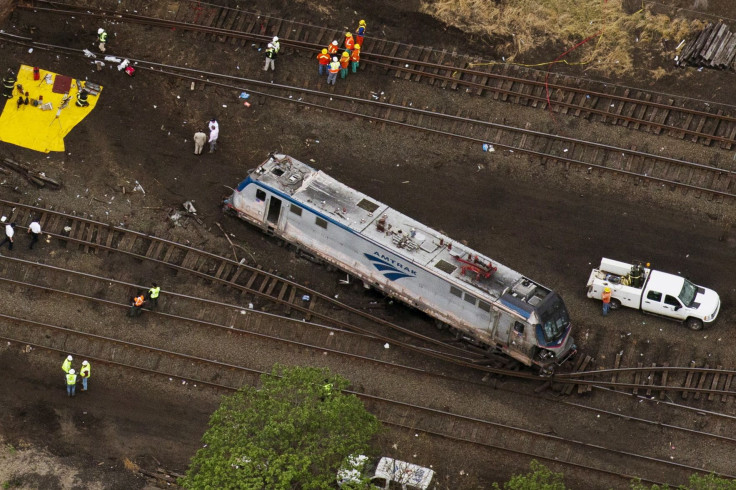Amtrak Train Crash Update 2015: Cameras To Be Installed In Engineers’ Cabs Following Deadly Derailment

Amtrak is equipping its locomotive cabs with inward-facing cameras that will record the actions of the trains’ engineers weeks after one of its trains derailed in Philadelphia, killing eight passengers and raising concerns over the railroad’s safety standards. The cameras will help monitor engineers’ performance and aid investigators in the event of an accident, the railroad said Tuesday.
Amtrak said it will install the cameras in its 70 Northeast Regional locomotives that run between Washington, New York and Boston first, and it expects the upgrades to be completed by the end of 2015. New locomotives will be outfitted with the cameras before going into service.
“Inward-facing video cameras will help improve safety and serve as a valuable investigative tool,” Amtrak President & CEO Joe Boardman said in a statement. “We have tested these cameras and will begin installation as an additional measure to enhance safety.”
Amtrak’s trains currently have outward-facing cameras and black boxes that can help investigators piece together the events of a mishap, but there is no equipment monitoring the people who drive the trains. The National Transportation Safety Board has been recommending the surveillance cameras for years, but rail workers' unions have typically opposed them, according to Ars Technica.
Following a deadly train crash in the Bronx borough of New York City in December 2013 that resulted from the train’s engineer having fallen asleep, Dennis Pierce, president of the Brotherhood of Locomotive Engineers and Trainmen, said such cameras would provide the public with a “false sense of security” and would not lead to safer commutes. "More than a century of research establishes that monitoring workers actually reduces the ability to perform complex tasks, such as operating a train, because of the distractive effect,” Pierce said.
The Federal Railroad Administration, an agency under the U.S. Department of Transportation, has previously said it supports installing monitoring equipment in trains, but it has not proposed new regulations requiring inward-facing cameras, according to the Associated Press.
Northeast Regional Train 188 derailed and crashed May 12 in the Port Richmond section of Philadelphia. Two hundred of the train’s 238 passengers were injured and eight were killed. A federal probe into the derailment has centered on the train’s engineer, Brandon Bostian, who suffered a head injury in the crash. Bostian has maintained that he can’t remember what happened.
The train was traveling 106 miles per hour – more than twice the recommended speed limit – when it entered a turn and flew off the tracks. It was still unclear two weeks later whether the accident was the result of human error or mechanical failure.
The Federal Railroad Administration immediately told Amtrak to take measures to improve safety, but none of the orders had to do with cameras. The federal agency told Amtrak it would need to increase the number of speed limit signs along the tracks and use train control technology to automatically detect when a train is traveling too fast.
© Copyright IBTimes 2024. All rights reserved.






















